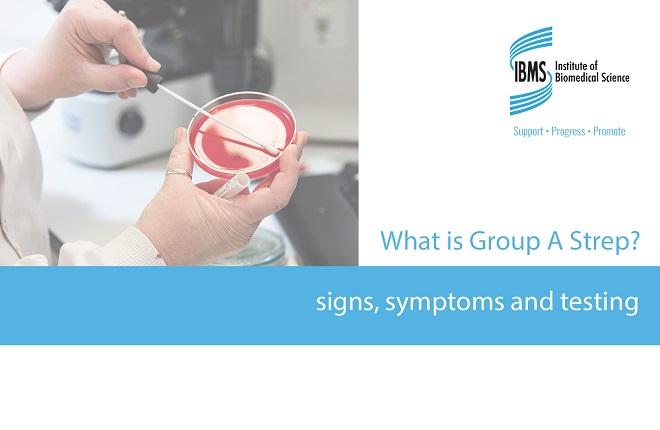What is Group A Strep?

The IBMS Specialist Advisory Panels highlight the signs and symptoms of Group A Strep
Following the sad news that a pupil at a primary school in Surrey has died during an outbreak of scarlet fever, the IBMS Specialist Advisory Panels feel that it is important to highlight the signs and symptoms of this infectious disease, and the processes involved in testing.
Scarlet fever is caused by a bacterium called Streptococcus pyogenes, also known as ‘Group A Strep’ (GAS), which is very contagious - it can also be associated with an ‘invasive’ strain (iGAS). Generally, people spread the bacteria to others through respiratory droplets or direct contact. It usually affects the throat so people experience a very sore throat, which sometimes leads to tonsilitis.
The disease can start with general symptoms such as high temperature, muscle aches, diarrhoea and vomiting - which would always be of concern in a child. Then patients develop a rash, which feels like sandpaper to touch and is very itchy. Their tongue can become swollen and red (‘strawberry tongue’). The person’s condition can then deteriorate quickly and, as we have seen, they can become very seriously ill.
Anyone can get scarlet fever but there are some factors that can increase the risk of getting this infection. It is most common in children 5 through 15 years old and can easily spread in large groups of people like schools and day care settings.
As scarlet fever is a bacterial infection there are good antibiotic treatments available so prompt diagnosis is very important.
Because there are many causes of the symptoms of GAS, laboratory testing to check what is actually causing the infection is really important.
Once a throat swab is taken, a biomedical scientist will test it in a diagnostic microbiology laboratory. This involves seeing whether they can grow the bacteria from the throat swab or looking for its genetic material.
If the testing finds GAS, the laboratory reports the result to the patient's doctor and recommends which antibiotics will be best for treatment.
Biomedical scientists can also do further analyses to find out if the patient was infected with an iGAS. iGAS is where the bacteria are isolated from a normally sterile body site, such as the blood. Any iGAS manifestation can be associated with development of streptococcal toxic shock syndrome.
When there are several people diagnosed with an iGAS in the same area, it is important to know whether they all have the same strain. Public health professionals who investigate possible outbreaks need this information to help them in their work.
The best way to keep from getting or spreading Group A Strep bacteria is to wash your hands often. This is especially important after coughing or sneezing.


